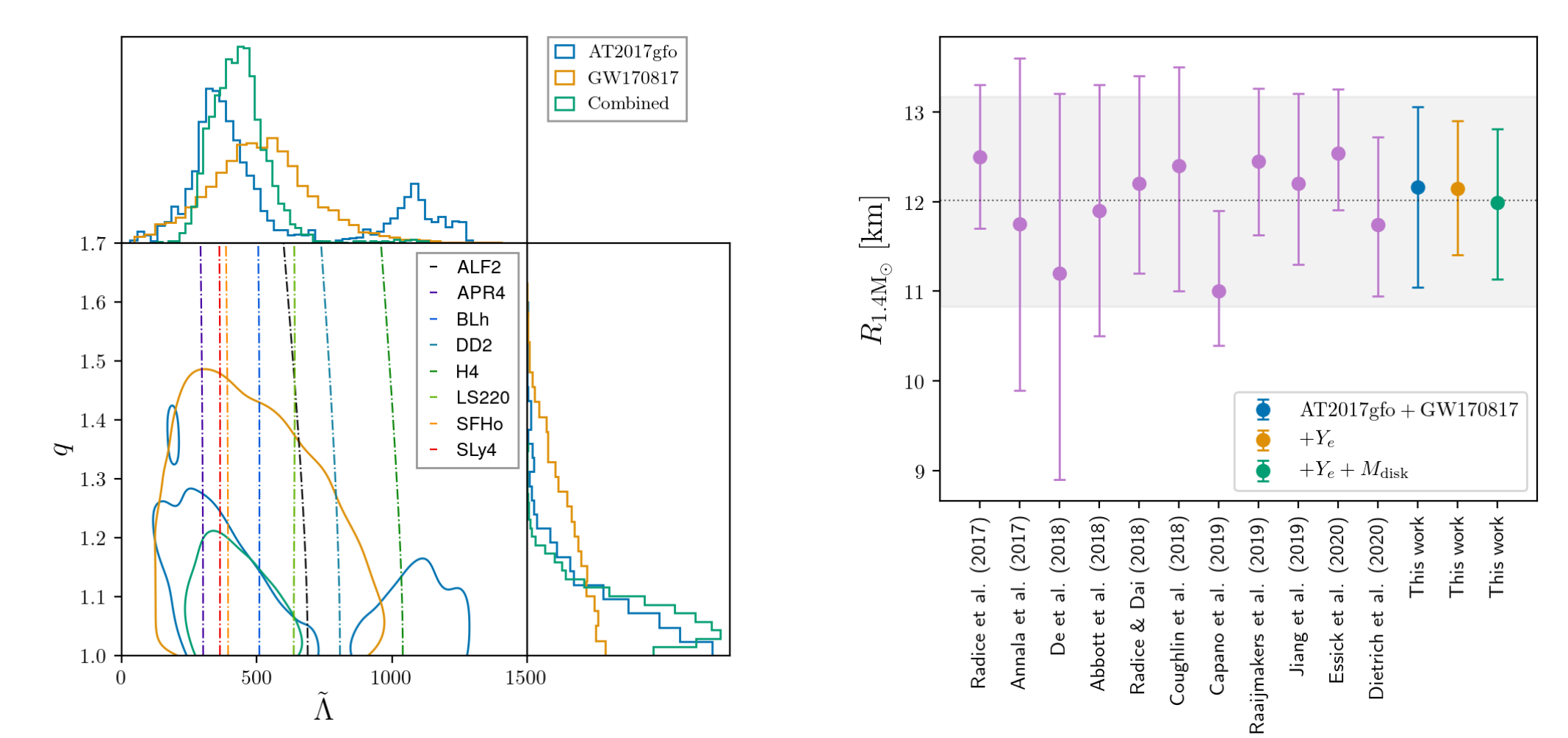AT2017gfo: Bayesian inference and model selection of multi-component kilonovae and constraints on the neutron star equation of state
Matteo Breschi, Albino Perego, Sebastiano Bernuzzi, Walter Del Pozzo, Vsevolod Nedora, David Radice, Diego Vescovi
Preprint on arxiv:2101.01201 [astro-ph.HE]
Published in Mon.Not.Roy.Astron.Soc. 505 (2021) 2, 1661-1677
Published:
The joint detection of the gravitational wave GW170817, of the short γ-ray burst GRB170817A and of the kilonova AT2017gfo, generated by the the binary neutron star merger observed on August 17, 2017, is a milestone in multimessenger astronomy and provides new constraints on the neutron star equation of state. We perform Bayesian inference and model selection on AT2017gfo using semi-analytical, multi-components models that also account for non-spherical ejecta. Observational data favor anisotropic geometries to spherically symmetric profiles, with a log-Bayes’ factor of ∼104, and favor multi-component models against single-component ones. The best fitting model is an anisotropic three-component composed of dynamical ejecta plus neutrino and viscous winds. Using the dynamical ejecta parameters inferred from the best-fitting model and numerical-relativity relations connecting the ejecta properties to the binary properties, we constrain the binary mass ratio to q<1.54 and the reduced tidal parameter to 120<Λ̃ <1110. Finally, we combine the predictions from AT2017gfo with those from GW170817, constraining the radius of a neutron star of 1.4 M⊙ to 12.2±0.5 km (1σ level). This prediction could be further strengthened by improving kilonova models with numerical-relativity information.

